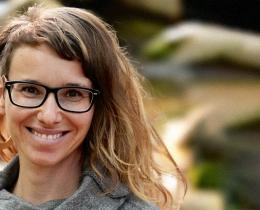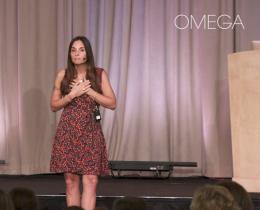Omega: What do you mean when you say permaculture can be useful for changemakers?
Abrah: Permaculture's regenerative design process can be used by anyone who is already anchored in a professional field. It is a framework to help people design and reimagine their personal lives, personal sustainability, approach to project management, and vision for the world.
It’s also a pragmatic, personal empowerment tool to help people learn to leverage their world-changing visions. It offers tools and vehicles to do the inner transformation work necessary to create actual change in the outer world.
Omega: How can we set goals to best leverage the power of our influence?
Keith: The society we live in often gives us a myopic perspective. It’s hard to zoom out and think broadly about how our lives connect to other people’s lives, let alone how they connect to the lives of others throughout time. One way to think about this is to ask yourself: "At the end of my life, or my child's life, what impact do I want to have made in the world?" From there you can do a process called backcasting to understand what goals to set and which steps to take.
In addition to goal setting, it is important to understand who you are. Permaculture asks you to understand the context or system in which you're working and the characteristics of the components of that system. You can use this process to think about what your personal strengths are, what’s hard for you, and where you want to grow. Then you relate those to the work you are doing and the larger community you live in and you begin to see what alliances or skills you need to build or what you may want someone else to do for you because it's just not your strength.
Another tool you can use to help you set goals is a practice that comes out of the business community called SMART. It's an acronym for Simple, Measurable, Attainable, Relevant, Timely. It helps make sure your goals are within the larger context of your objectives so that even though you're taking bite-sized steps, you can feel like you're making long-term progress. It also supports you by having you find someone to help you maintain your momentum by holding you accountable and offering you support. You can approach anything this way, from a work project to your personal life.
Abrah: Our society often encourages us to give a rapid, reactive response rather than a long, thoughtful, proactive response. We have a very narrow bandwidth when it comes to thinking about the future. People aren’t able to plan 10 years in advance, let alone a lifetime or a generation in advance. It’s a radical notion for people to even take a step back from the day-to-day and set goals for themselves. Teaching permaculture over the years, I’ve found that generally students are not very ambitious in their goals. I’ve found it’s difficult for students to think beyond themselves and their immediate relationships, what in permaculture we call Zone 0 and Zone 1.
It’s important that students see themselves as agents of change nested in the center of concentric rings of influence. When they do, they understand their personal power in a new way and are able to leverage and identify who they have influence over in the next ring out from them. Is this someone who has resources? Is it an organization or institution they’re affiliated with? They can create a schematic design to illustrate how they can influence that next ring, and then how that next ring can influence the larger systems that we seek to change.
Omega: How exactly can permaculture help you design your life?
Keith: In addition to thinking about how you want your life to feel or the amount of money you want to make in a given year, permaculture is about the interrelationship of different parts of your life. We call this social permaculture, and it's the cutting edge of the permaculture field right now. It takes the 30-year history of this discipline and applies the principles to individual and social system design. It asks you to look closely at questions like what impact you want to have on the world, what kind of community member you want to be, and how can you take practical, attainable steps to achieve those goals?
Omega: How does one maintain hope and inspiration when doing this work at home?
Abrah: We encourage people to establish accountability buddies. These are people that can help you meet benchmarks or deadlines that you've established. Buddies check in with each other to see how things are going. You can also set up anchors in your home community. You can explicitly ask people to be your anchor and in this way you get to feel embedded in something larger than what can sometimes feel like your own small world.



